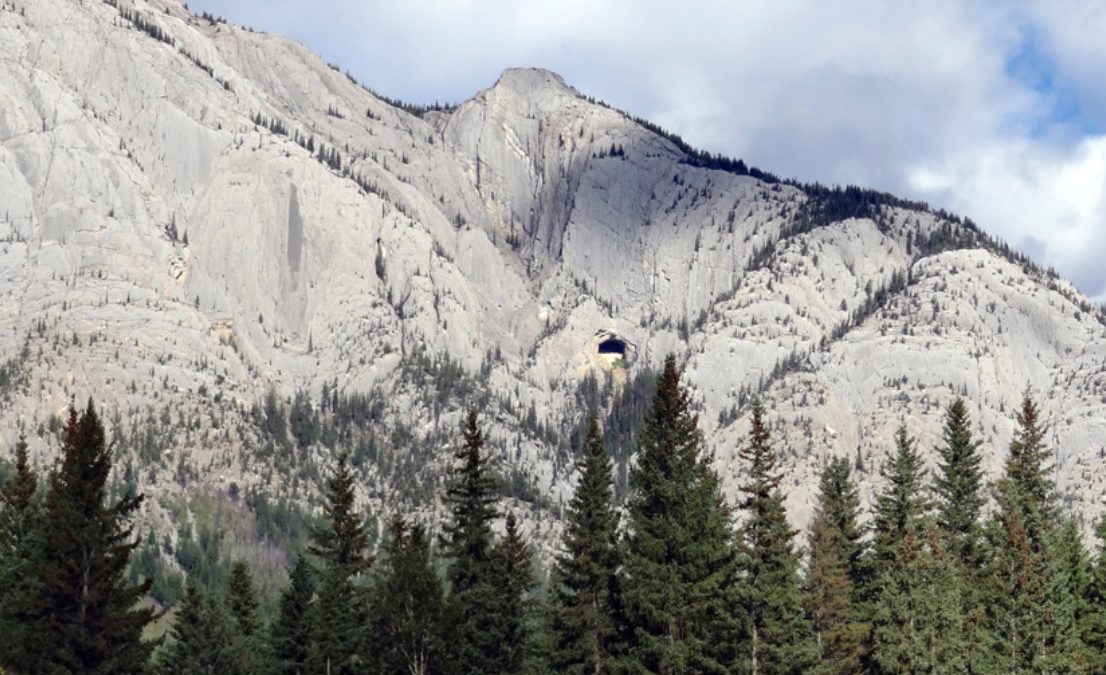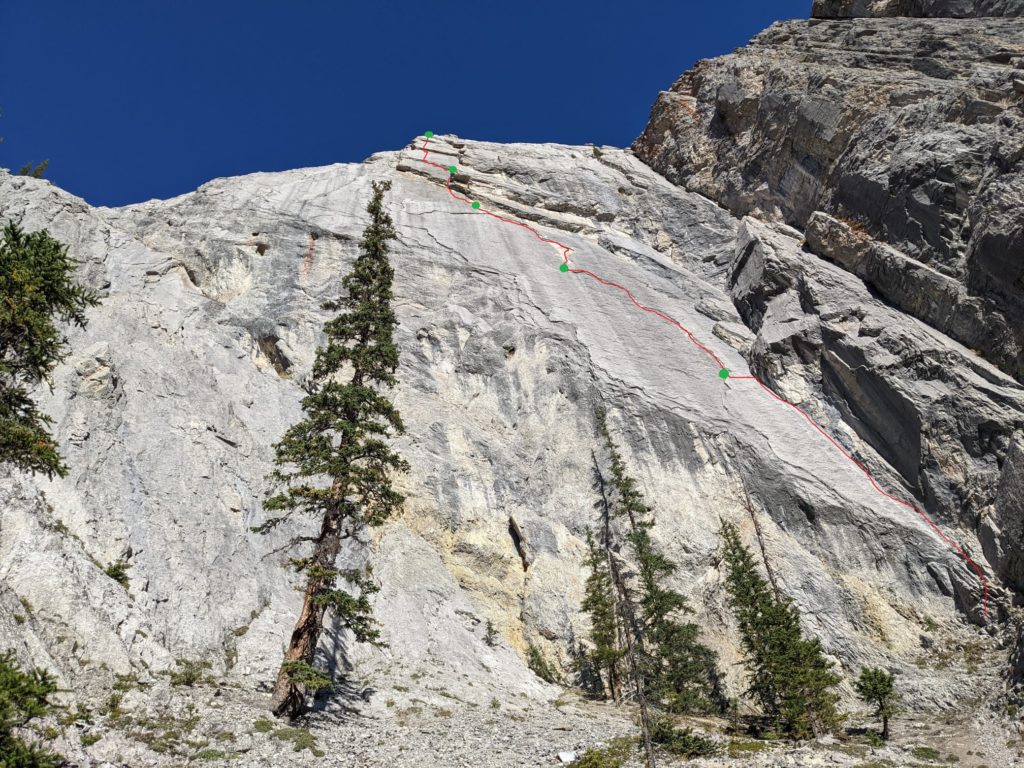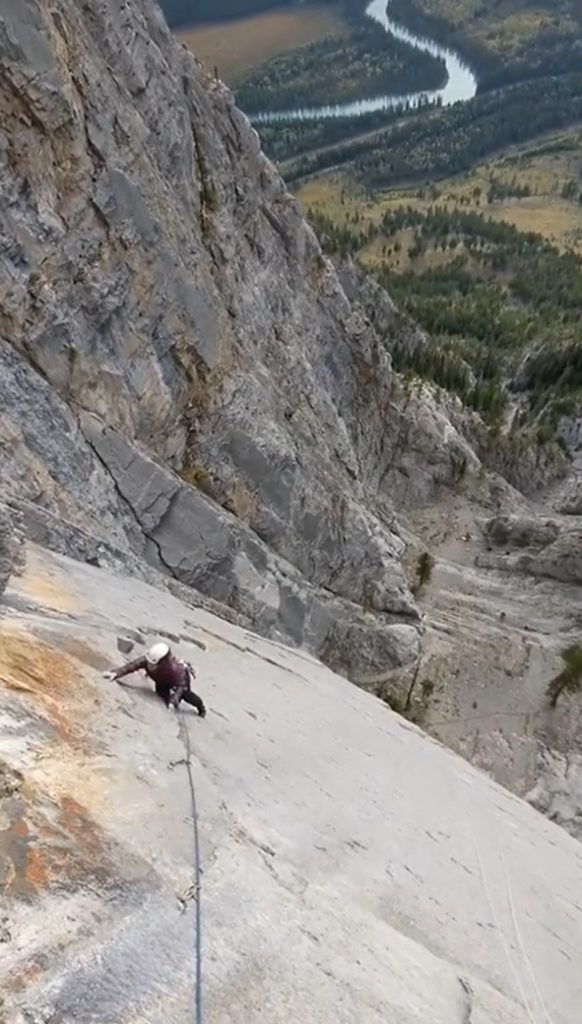Gravitational Wave is New Rockies Five-Pitch 5.11
"Last pitch is half on gear, so it adds an element of seriousness, but it's bolted anywhere you can't get good gear."

Christian Schlumpf has completed a new route high on Mount Cory in the Bow Valley. Gravitational Wave is a five-pitch 5.11a that follows 160 metres of solid limestone.

Schlumpf, an alpine guide and apprentice ski guide with the Association of Canadian Mountain Guides, said, “Rock is awesome overall. Last pitch is half on gear, so it adds an element of seriousness, but it’s bolted anywhere you can’t get good gear.” And that “the approach is super cool, and you visit the Hole in the Wall cave on the way.” The Hole in the Wall cave can be easily seen from the Trans Canada between Lake Louise and the town of Banff.
Schlumpf, who’s established other routes in the area, spent around 12 days working on Gravitational Wave. Other climbers helped along the way, including Bryce Shaw, Adam Campbell and Jacob Downie. The first ascent was on Sept. 14 by Schlumpf and Isobel Phoebus.
“Good quality, sustained climbing in a cool, exposed setting,” said Schlumpf. Adding that all belays are bolted, that it gets afternoon sun, but that it’s exposed to prevailing winds. You need a 70-metre rope, 14 draws, a single rack of cams from 0.3 to 0.3, doubles from 0.5 to 1 and some medium-sized nuts.
Gravitational Wave 5.11 160 m
P1: 5.10a 30 m: Climb the corner past bolts. Place a couple pieces of gear before the delicate traverse left to belay. Bolt spacing is a bit friendlier on this pitch than the rest of the route.
P2: 5.10c 30 m: Climb the obvious flake past bolts. Delicate, balancy movement.
P3: 5.11a 35 m: Continue climbing the flake. Sustained, delicate climbing culminates in a demanding undercling traverse. One section of this pitch requires some small-medium gear.
P4: 5.10b 25 m: Step left and climb the slab before pulling to the overhang above. Place some gear in the corner before continuing up with big exposure below. Belay on the prow to the right.
P5: 5.11a 35 m: Traverse left under the small overhang, clipping a couple bolts and placing gear. Clip a bolt before pulling the overhang into a perfect crack. Extending some pieces here is recommended. Climb the crack to the base of the next overhang and traverse left slightly before pulling it. The difficulties ease here, but the rock becomes a bit looser. Pay close attention to where you place gear. Follow the natural weakness and occasional bolts to the top.
Approach: 1.5 to 2 hours – Approach as for the route Too Hard for Arbic (Banff Rock pg. 256). From the base of this route, continue along an exposed descending traverse with a hand line to enter the main drainage beyond. Follow the line of least resistance up the drainage, going up the left side of the most significant scrambling section to the base of the wall. There is a somewhat beaten path through this section.
Descent: Two options – Either rappel the route with a 70 m rope or walk off. To walk off, do a short final traversing pitch to the left and belay using a large boulder. From here you descend slightly into the forest to the northeast before climbing again and traversing northeast to the base of a small cliff. Follow the base of the cliff, climbing a bit, then continue traversing east. There is eventually some flagging tape and a beaten traverse track across the scree field to gain the Cory scramble route. More info here.



